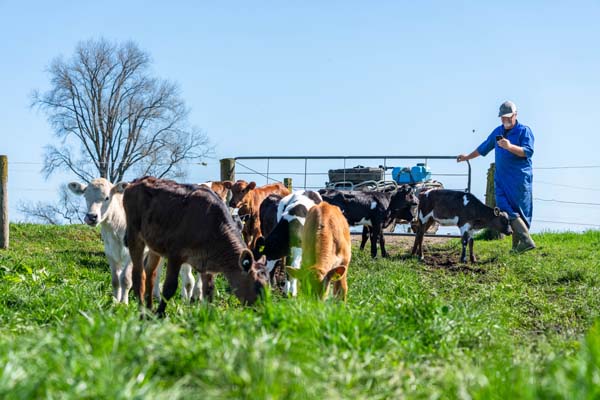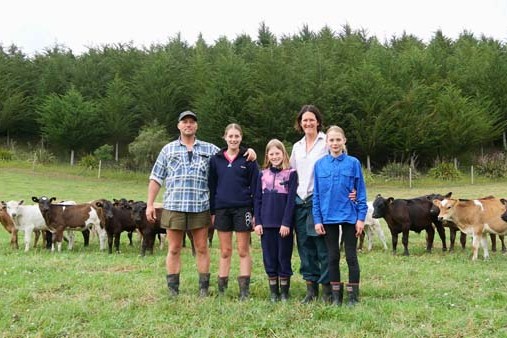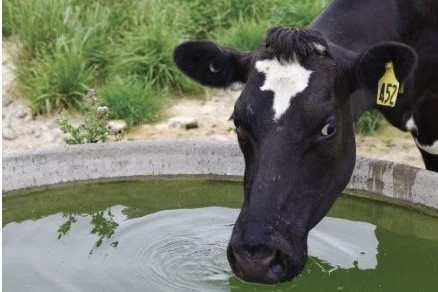Lynda Gray and Andrew Swallow
Ever used short gestation Hereford semen? If you have, and you bought from CRV Ambreed, World Wide Sires or ST Genetics then there’s a fair chance it came from South Canterbury breeder Yvonne Lee’s herd.
The former police officer (see panel) went farming in the late 1990s and in 2007 started a Hereford stud focused on reducing gestation length while maintaining important beef production traits.
“Just under 25% of our cows are now in the top 1% for gestation length,” she told Dairy Exporter. “We’ve got two females that have gestation length EBVs of better than -10 and our best bull, which is a trait leader for gestation length, is at -10 with a birthweight EBV of 1.8. “
A glance at the New Zealand Hereford Association’s website reveals just how good those figures are. The top 1% of all recorded Herefords in NZ only average -5.7 for gestation length and the breed average is -0.3.
Put across an average gestation length dairy cow, semen from a bull with a -10 EBV will, on average, bring calving five days earlier.
“That’s five more days in milk, which has a clear dollar value, but perhaps more importantly it increases rebreeding time, giving cows a better chance of getting back in calf, on time, and having more days in milk the following year too.
“There’s probably an extra dollar value in calves or weaners too because they’ve got a few more days’ extra growth,” she adds.
As beef farmers Lee says they’re very conscious that about 70% of cattle processed for beef in NZ are dairy or dairy-beef cross, so while breeding short gestation, easy calving and low birthweight bulls has been their main focus, they’ve kept a close eye on important traits for finishers too. For example, their bulls supplying CRV Ambreed’s Fertabull programme are homozygous polled with above average eye muscle area (EMA) and that are in the top 1% for intra-muscular fat (IMF).
“We’re DNA testing for polled and started selling homozygous polled last year, but we’ve still got a long way to go to get our whole herd homozygous polled.”
Using a homozygous bull means all calves will be polled too, even if the dam is horned or heterozygous polled (not horned but carrying horned genes) because the polled trait is dominant. Consequently the cost and time of dehorning calves is avoided, not to mention the negative public perception of dehorning.
As for those other two vital traits for dairy, calving ease and birthweight, since they bought the core of their Bluestone herd at the dispersal sale of the Leader Hereford Stud, North Canterbury, they’ve taken calving ease from below breed average, to +8, which is in the top 10%.
That reflects simultaneous selection for lower birthweight across the herd, taking that trait from +5 in 2007, which was above breed average at that time, to +2, which is now in the lowest (best) 20%.
“We don’t really want to go to top 1% (lightest 1%), which is at -0.8 now, because their own herd calves on moderate hill country, so they also have to consider survival of their own calves and those of their clients too,” she adds.
Maintaining that low, but not too low, birthweight is now the focus while continuing to edge forward on gestation length, growth and carcase characteristics.
“Given we’re now one of the top Hereford herds in the country for gestation length, we’re not going to make gains in the next 10 years like we have in the past, but I do believe we can keep going shorter.”
Semen has become their main product, with bulls spending up to eight months at Xcell Breeding Services just north of Christchurch, but they’ll still have 70 or so yearling bulls for sale at their on-farm sale, October 2.
“We had a complete clearance last year and some clients didn’t get everything they needed.”
That was despite the background of the Mycoplasma bovis outbreak and the biosecurity concerns that raised, including prompting some dairy farms to go all AI.
“It just meant we had to explain our biosecurity to clients and we also tested,” Lee says.
In the interests of biosecurity some dairy clients are now buying Bluestone short gestation bulls to put across commercial Hereford beef cows and breed their own sire teams for their dairy herds, she adds.
“No doubt they believe it will be more profitable too.”
Bull clients come from right across the South Island, most of them repeat buyers, while semen is sold NZ-wide, and into Australia.
“We might have some going to other countries too later this year.”
Beef opportunities
Short gestation bulls and their earlier, easier calving progeny are a missed opportunity for commercial beef farmers, Yvonne Lee believes (see main story), particularly for putting to second calving beef heifers.
Often these take longer than average to cycle after first calving so such bulls bring them back into sync with the rest of the herd, reducing the risk of a dry young cow and losing good genetics from the herd, she explains.
For all cows earlier calving means more time to regain condition before mating, increasing likelihood of conception, while weaners will be that bit older, hence likely heavier, to sell, she adds.
“Genetically over time there’s the potential to pull back the calving date of a cow herd and it can be done without compromising on growth and carcase traits. It’s not an ‘and/or’ proposition; it’s a plus/plus.”
From thin blue line to bluestone
Yvonne is not your typical Hereford stud breeder. Before farming and kids she was a police officer in Invercargill, which is where she met Ben, a solicitor. After marrying they decided to go farming in 1996 so their kids would have a rural upbringing. They chose South Canterbury because Yvonne had family farming connections there, they liked the country and climate, and it put them within daytrip distance of Christchurch.
From a stepping-stone of 78 hectares at Cave, trading sheep and cattle, they moved on to their current 380ha property of predominantly hill and tussock country at Cannington, in 2002. A shortfall of easier country for growing out young stock prompted purchase of a further 218ha nearby in 2017.
Rainfall on the home farm is 1140mm, and 760-890mm on the new block. Besides 225 Hereford cows and replacements, they run 800 ewes, finishing all lambs and topping up with trading lambs.
“We don’t buy any trading cattle for biosecurity reasons.” Yvonne runs the farm with help three days a week from son Hamish (23). Ben chips in as much as the demands of his animal health import and distribution business, Agilis, allow. Daughter Gabby (21), is a nurse in Christchurch but also takes a keen interest in the farm.
Bluestone Herefords
- Dedicated to short gestation length (GL) breeding.
- Bulls among breed leaders for trait.
- Average calving five days earlier.
- Beef traits maintained in process.
- On-farm spring sale of 70 yearlings.
- Semen sales soaring.




